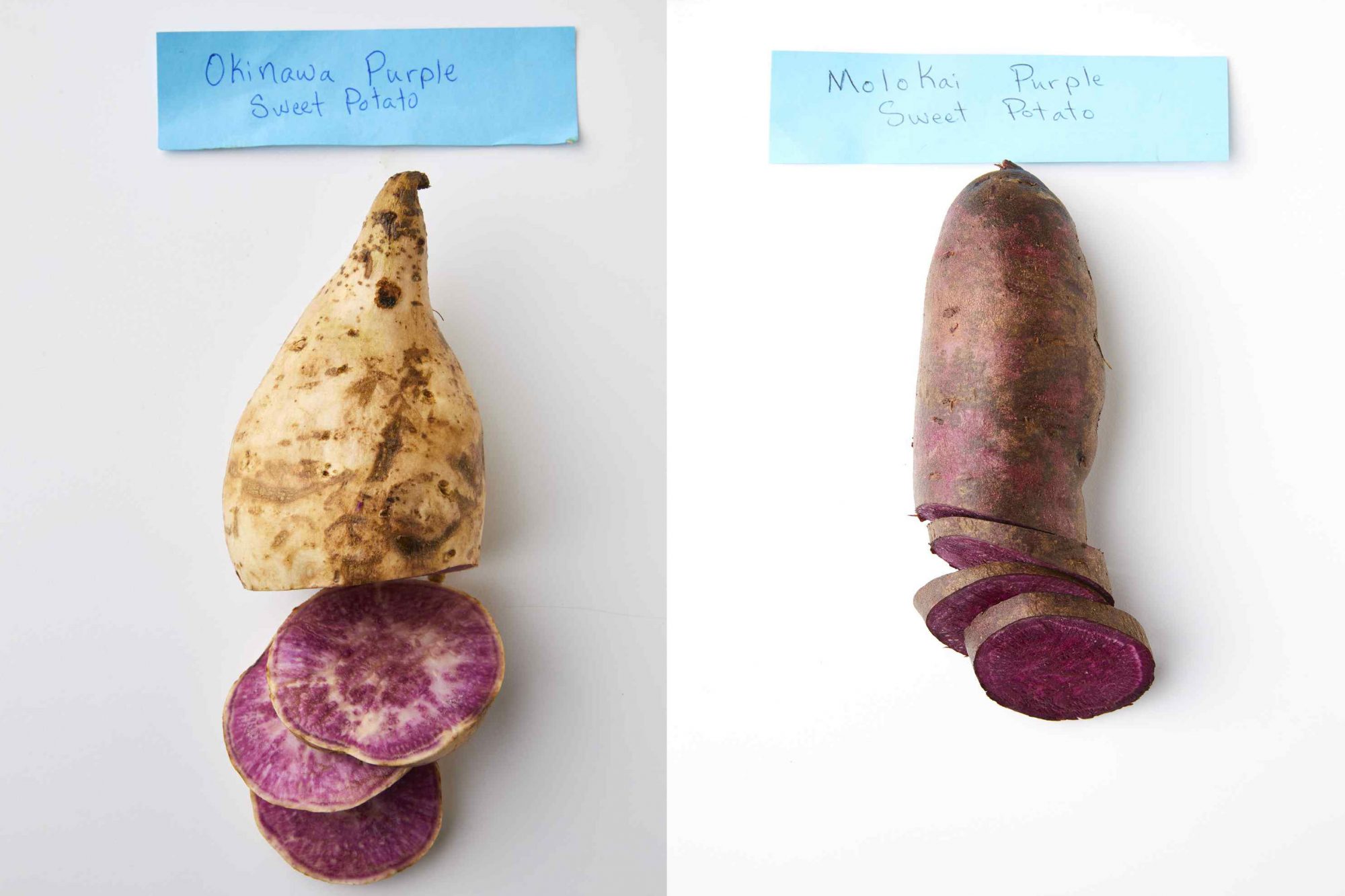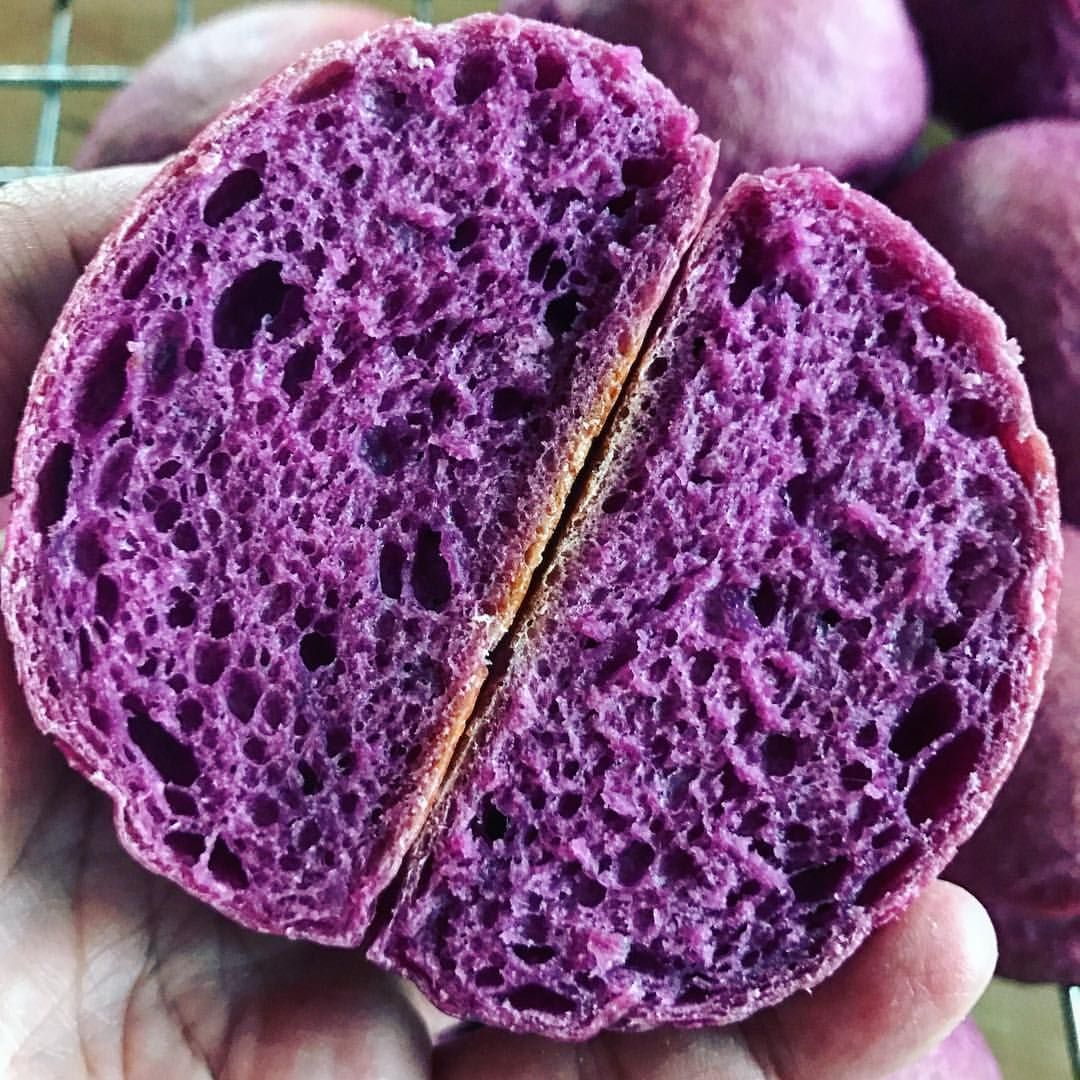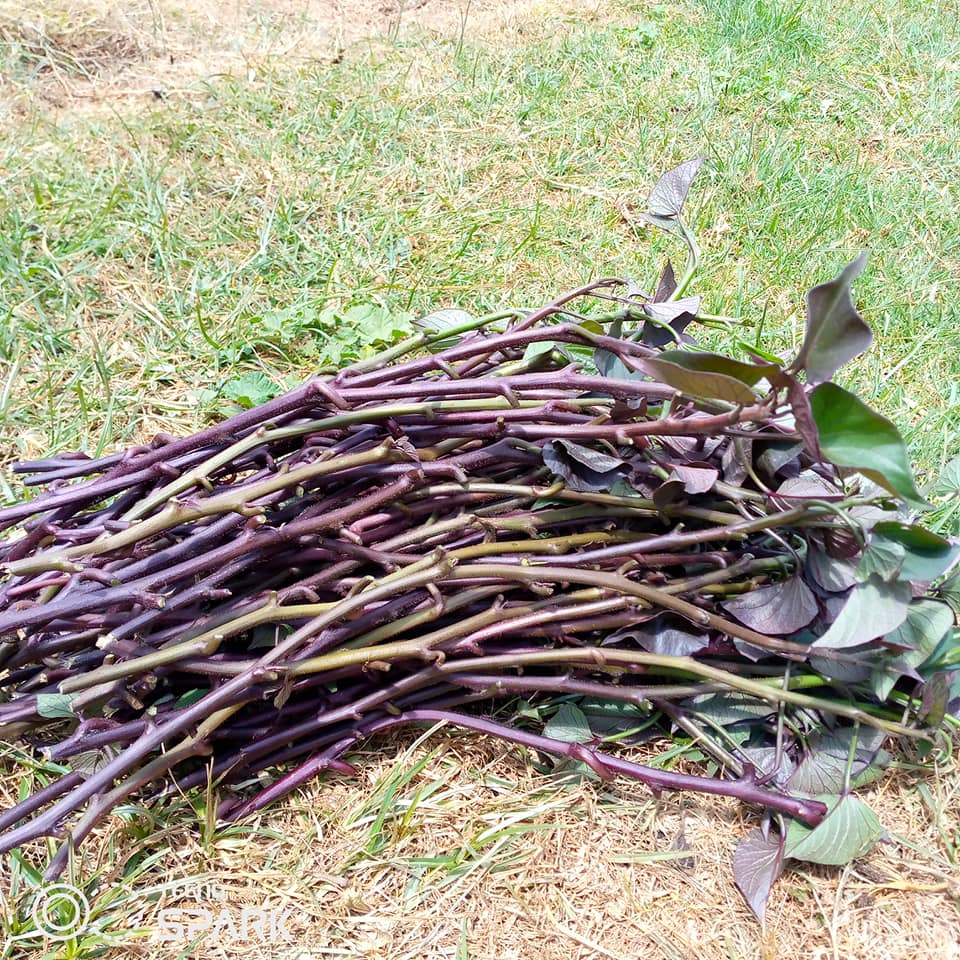Purple-fleshed sweet potato (high in antioxidants)
Summary
Sweet potatoes with a purple colored flesh have been introduced from Hawaii and Japan into African farming systems and markets over the past decade. In compared to white or yellow sweet potatoes the purple-fleshed types have two to three times more antioxidant activity that boost the body’s growth, immune system and brain activity. Eating purple-fleshed sweet potato (PFSP) is improving the dietary balance and tackles vitamin deficiencies that widely occur in subsistence farming and poor communities due to low intake of vegetables and fruits. The high levels of antioxidants in PFSP has advantages for people of any age, promoting early childhood development as well as keeping adolescents and elderly healthy and active.
About the Solution
The distinct color of purple-fleshed sweet potato is a result from its high levels of anthocyanins, a type of flavonoids with a strong antioxidant effect that neutralizes harmful compounds in the body that damage cells. Sufficient intake of these natural protective agents is of crucial importance to reduce risks of heart disease and cancer, and lead a healthy and active life. Purple-fleshed sweet potatoes have a rich, almost winey flavor with a creamy texture. They are denser and drier than regular sweet potatoes, which is why moist cooking methods and longer times are recommended. After cooking tubers can be preserved for several months in airtight containers which allows to realize year-round supply of healthy food in rural and urban communities.
Purple-fleshed sweet potato are prepared for eating in the same way like white and orange colored sweet potatoes by cooking and frying them fresh, or making them into puree or flour that can be stored or sold to bakeries or other food manufacturers. The tubers from PFSP have a low glycemic index which means that blood pressure and sugar levels are not affected much like by other starchy staple foods, making them suitable for people with diabetes and hypertension. Residues from vines and peels as well as deformed tubers of PFSP can be turned into a silage that makes a nutritious fodder for all types of ruminant and pigs.
There are PFSP varieties with white and purple skins that both have the characteristic deep purple flesh inside the tuber. Pigmentation of the tubers comes from anthocyanins which is the same as found in blueberries, strawberries, purple carrots and blue tomatoes, among other vegetables and fruits. Next to providing a source of energy and anthocyanins, PSFP varieties also contain high levels of potassium, fiber, vitamin C and vitamin B6.
The multiplication, planting, management and harvesting of PSFP varieties is exactly the same as for other types of sweet potato. Planting materials are propagated from seeds, tubers or vines. Cuttings from vines are most commonly used for planting and easy to make yourself. Slips from tubers or cuttings from vines are nursed by planting them in beds or placing the bottom of the stem in water. The healthy slips or cuttings are planted by inserting these at an angle in the soil, using a spacing of 50cm between rows and 30cm from plant to plant.
Commercialization
Commercially available
Solution Images
Institutions

Accompanying Solutions
Community-based cutting production, Tent-style greenhouse production of vines and cuttings, Raised bed production and weed management, Specialty blended fertilizers, Relay intercropping of legumes with sweet potato, Silage production from sweet potato vines



